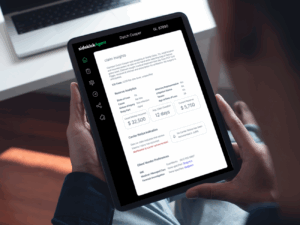August 19, 2024
Watch theft began as a niche, isolated crime. Now, it has grown into a far-reaching epidemic across the UK and beyond. During the summer months, individuals on holiday or out shopping should consider leaving their Rolex, or other luxury watch, at home — or take precautions and have it correctly insured. All lavish jewellery is vulnerable to opportunistic thievery, but luxury watches are the most highly sought after. Well-known watch brands (like Rolex, Patek Philippe) reap an ever-fluctuating resale value within secondary markets, circulate rapidly in the black market, and can be easily concealed and sold for instant cash.
In the high-net-worth space, clients should be aware of the opportunity and benefits to covering this risk as a single item within an all-encompassing home and contents policy. It is also critical to be aware of the trends surrounding watch theft and how to protect against it, and the factors driving the crime’s growth.
The dual landscape of luxury watch markets
Since the 1990’s, the watch and jewellery market — a large growth area of which are luxury items — has seen a steep and steady growth in retail sales, according to UK Office for National Statistics (ONS) data. But watch enthusiasts who’d rather not pay the premium began purchasing used watches, making way for the proper emergence of a secondary, pre-owned watch-dealing market around the turn of the millennium. Certain pre-owned watches continued trending upward in value, and by 2010, the market had exploded. Resale luxury watch values reached an all-time peak near the pandemic’s end in 2022, and have since returned to baseline.
The value of a particular watch model is determined by a range of factors, such as the brand’s reputation and what it’s made from. And while most watches cost less on the secondary market, certain brands and models — those in high market demand, are rare, or have been discontinued or have limited availability — can sell for more than double its retail value. One high-demand Rolex model — the sky-dweller — retails at £13,650 but can fetch up to £28,000 on the secondary market. Such value fluctuations and demand trends have incentivised and propelled watch theft into what is now an epidemic in major cities across the globe.
Protecting yourself on holiday
Many travellers dress in their finest clothing and accessories, and in warm temperatures, many adorn their wrists with luxury watches. Holiday-related activities typically lend themselves to increased vulnerability to theft, such as drinking at crowded bars into the early morning hours or shoulder-to-shoulder at a football match. Watch thieves rely on atmospheres where people’s inhibitions are lower, and their guards are down.
Flaunting on social media can catch the eye of experienced criminals who peruse social media profiles to pinpoint potential victims and seek out visual clues of the person’s location. Tourists may wander aloof in an unfamiliar area, none the wiser that a robber posted nearby is scoping passerbys’ wrists for targeted, discontinued or otherwise in-demand watch models. The confluence of these factors creates a breeding ground for opportunistic thievery; it is critical to remain vigilant and take preventative measures to protect yourself. Police suggest watch owners wear long sleeves over your watch while travelling, keep an eye out for people paying “too much” attention to you, and keep to busy, well-lit streets.
Watch theft trends in the UK
High-net-worth individuals going about their daily lives should be aware and alert, too. Take London, for example, during 2022, about one watch was stolen every 30 minutes, on average, according to a report based on UK police forces’ data revealed through freedom of information requests. The capitol city accounted for nearly half of all UK watch theft cases, with 600 stolen in December alone. These figures marked a greater than 40% increase from London’s reported cases in 2021.
Wealthy areas have proved exceedingly vulnerable to theft targeting. In the affluent central-London boroughs of Westminster, Kensington and Chelsea, 300 luxury watches — totaling £4 million — were stolen between April and September of 2022, by robbers preying on unsuspecting victims exiting venues after midnight, according to London Metropolitan Police data.
While all incidents of thefts (not limited to watches) steadily decreased each year between 2015 and 2022 in the UK, incidents of watch thefts specifically saw a consistent and sharp increase during the same period — a telling representation of just how highly sought-after watches have become.
Safeguard your timepiece
Any individual who purchases or owns a luxury timepiece, should, in the best-case scenario, keep all related documentation (receipts, valuations, transactional records) and the watch’s box, photograph the watch, then insure and register it with a specialist database, such as the Watch Register. These steps will aid in proving your ownership in the event of a loss.
In the high-net-worth space, customers’ jewellery can be insured under an all-encompassing home and contents policy, which covers the building and its contents and possessions, on an all-risk basis — anywhere in the world. A particularly high-value item, such as a luxury watch, can be itemised and insured as a single item (with the watch’s unique serial number listed) within the home and contents policy, or taken out separately in a single-item international policy. Insurers will have different limit amounts, depending on their risk appetite.
If you do fall victim to a watch theft, immediately report the details of the incident to the police, and if the watch is insured, notify your broker or insurer and submit a claim. Where appropriate insurers will instruct a loss adjuster to manage the claim on their behalf and after confirming the incident’s details with police, the adjuster would investigate; speak with witnesses, construct a timeline, and gather all available evidence and proof of ownership. Once the adjuster is comfortable moving forward with the claim and liability has been accepted, discussions about settlement of the claim can begin, within the terms of the available insurance policy cover.
But that’s not the end of the activity, as there is a wider notification and recovery process happening in the background.
The adjuster may start by searching the brand’s register — if available — for stolen watches, that tracks the watches by their unique serial numbers and flags stolen ones. Each claim journey varies, but insuring your watch makes it possible to eventually recoup the stolen watch’s value through a settlement or regain possession of it. Without the preparation and foresight of insurance, the owner will be forced to chalk the value of the watch up, as a loss.
Learn more > Explore our private client brochure.



